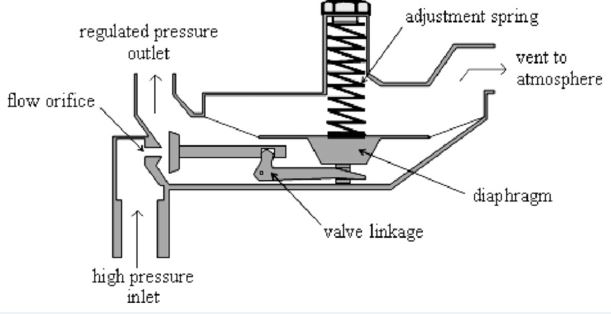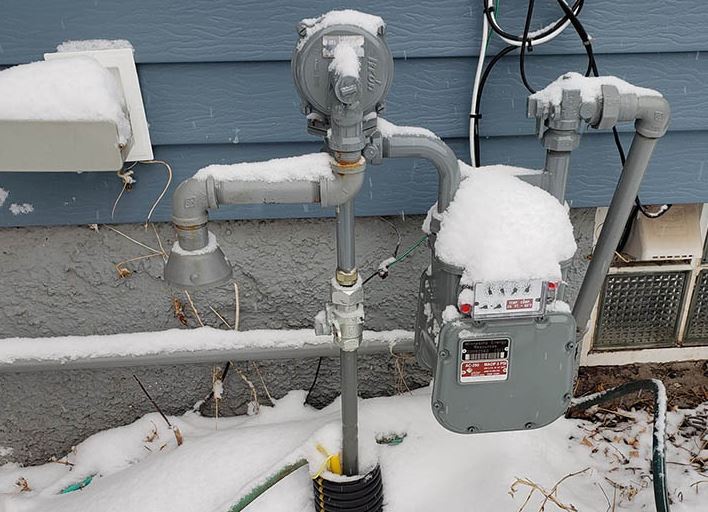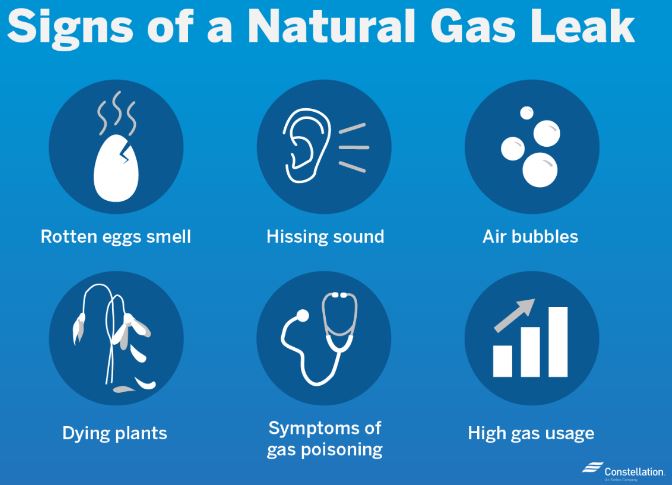Detecting Gas Leaks in the Home
Detecting Gas Leaks in the Home
As we pointed out in our article on Propane and Natural Gas, gas leaks outside the home are very common, especially in older neighborhoods. Gas leaks in the home are rare, but they sure can be dangerous! Even if you have no piped gas coming into your home, there is still the risk of radon (a naturally-occuring, cancer-causing gas in the ground), and carbon monoxide from any combustion engines or appliances operating closeby. Here are some of the detectors and monitors you will want to consider adding to your home.
Radon: Your home is most at risk for radon accumulation if you have a basement or a crawlspace. It’s a colorless, odorless gas that is heavier than air, so it can sit undetected in these areas. Here are two sites you can use to find a professional in your area: NRSB.org, CertifiedRadonPros.org, or you can test your home yourself and send the results to a lab for interpretation using this popular home test kit by First Alert, $16. If you do live in an area with high radon content, you may opt to get a monitor so that you’re always aware of the radon level in your home. The following monitors will help you stay on top of Radon:
- AirThings Corentium Home Radon Detector, $99, is portable so that you can occasionally move it to different locations in your home to check levels. It has a long-term history (for trends) as well as a short-term weekly view; both be displayed at the same time. Other devices by AirThings offer Radon plus more points of measurements like PM2.5, CO2, etc.
- EcoSense’s RD200 RadonEye is $175 and offers bluetooth and an app so that you can monitor radon levels remotely.
Carbon Monoxide (CO) can be easily confused with Carbon Dioxide, but they are very different and you must know why: CO in your home is deadly, while CO2 is a sign that people are living there! CO is a byproduct of combustion (incomplete combustion, actually), and when too much of it lingers in your home, your body will start to replace oxygen in your bloodstream with CO. This can result in tissue damage or death, in a short amount of time. (Mayo Clinic) For this reason, it’s imperative that all of your gas appliances are vented correctly, that your attached garage has air barriers between the garage and house, that you use a fireplace correctly, and that any running generators are located a safe distance from the house (6 feet or more). If you have any of these (gas appliances, attached garage, working fireplace or generator), it’s great to have a CO monitor installed that will alert you to the presence of this dangerous gas. Check out these options, all of which would get installed high on the wall or on the ceiling (as CO is slightly lighter than air and tends to go up in your home):
- First Alert Smoke and Carbon Monoxide Detector with 9V Battery, $27: This is a good, old fashioned wall-mounted detector that gets 1 9V battery (included!) You don’t have to have wifi to monitor it. Just change the batteries once a year and try the “test” button to make sure all is in working order.
- This Combination Smoke and CO alarm by X-Sense, $40, is popular because it has a 10-year battery, allowing you to skip those battery changes for a while (focus on changing your air filters on time instead!)
- A Plug-in Carbon Monoxide Detector by Kidde makes sense if you are renting and aren’t provided with a detector, or don’t want permanent installation but want the peace of mind of your family’s safety. It has battery backup and does include 2 AA batteries (nice!). Since plugs are often within reach of children, it has a “tamper-resist” mode to alert if it is accidentally unplugged. It’s recommended to have at least one of these on each floor of your home.
You may be under the impression that these monitors may also protect you from all invisible gasses, like natural gas and propane, but that’s not the case! Each gas has a different chemical makeup, and the detectors that find them use different technology. So, if you have natural gas or propane piped into your home, it’s a great idea to also have the appropriate detector ready to sound the alarm if there’s a leak inside. Here’s where you need to know which gas you have, because propane is heavier than air, so it tends to hang around at floor level, which can be a danger for children or pets who spend more time on or near the floor. Natural gas, on the other hand, is lighter than air so it will float up near the ceiling. We definitely recommend reading the installation instructions thoroughly for any of these monitors, to make sure you place them correctly! You’ll also want to know the term “LEL”. These gasses are combustible, but only in the right mixture of fuel gas and air. The range of combustible mixture is called the “explosive limits”, of which the least amount of gas mixed with the atmosphere is called the “Lower Explosive Limit” (LEL, which is the lean ratio) and the most amount of gas mixed with the atmosphere is called “Upper Explosive Limit” or UEL, also called the rich ratio. Since the air is a home usually just has traces of such gasses when a leak forms, a detector may only use the LEL, and show “percentage of LEL”. That means the alarm should go off way before the concentration of fuel gas is strong enough to ignite, like at 5 percent of LEL.
- Nighthawk Carbon Monoxide & Combustible Gas Detector, $44, by Kidde does double duty, and comes with a 6 foot extension cord so that it can be properly positioned to detect the correct gas. It’s plug-in and comes with a 9V battery for backup. The CO levels read in ppm, and the gas detector simply sounds the alarm with visible “GAS” on the LCD readout.
- EG’s Natural Gas Detector and Propane Detector, $32, has a clear, easily read display that reads in % of LEL, where the alarm sounds at 5% LEL and you can watch the levels go up or down.
Since I live in the country, I have a propane tank that is periodically refilled by a propane company. Recently, while thinking about getting the gas tank in my backyard refilled, I had a thought: what if my piping is leaking in the yard? How would I know? Of course, I could call the propane company to come out and “sniff” the connections and ground, but if they are not quickly available, or I just want to make sure I connected my grill correctly to a small propane bottle, it’s not an ideal option. Here are the portable detectors I thought would be especially good to have for this purpose, and while professionals use instruments that cost hundreds, serviceable home use detectors can be significantly less.
- TOPTES PT199, $17, is suitable for LPG, methane, ethane, propane, butane, natural gas, coal gas, gas fuel, sewer gas, liquefied natural gas, etc. Since it’s shaped like a pen, it’s easy to move it around in tight spaces to find leaks (like the back of your stove or at a wall valve). The alarm will go off at 5% LEL and stay on until the gas clears to a lower level, and it also has an LCD readout of PPM (parts per million).
- You can get a professional gas detector at a reasonable price now too: Klein Tools ET120 Gas Leak Detector, Combustible Gas Leak Tester, $102, has an 18” gooseneck that allows you to hold the instrument with one hand and move the “sniffer” around to probe for a leak. It will detect methane, propane and other combustible gases at concentrations as low as 50 ppm, but could be used at lower sensitivity to detect concentrations as high as 10,000 ppm.
- For added functionability, the Gas Leak Detector, Protmex HT609 Natural Gas Detector has temperature and humidity and is suitable for detecting LPG, methane, ethane, propane, butane, natural gas, coal gas, gas fuel, sewer gas and liquefied natural gas. The backlit screen aids in low light. It has low, medium and high sensitivity selection modes.
Photo by Sugarman Joe on Unsplash






